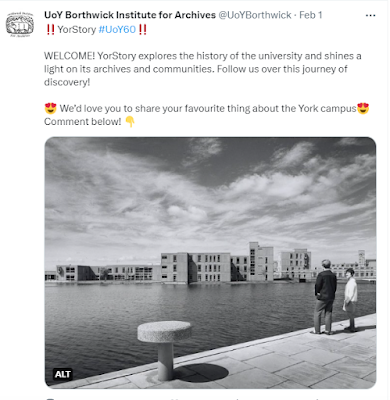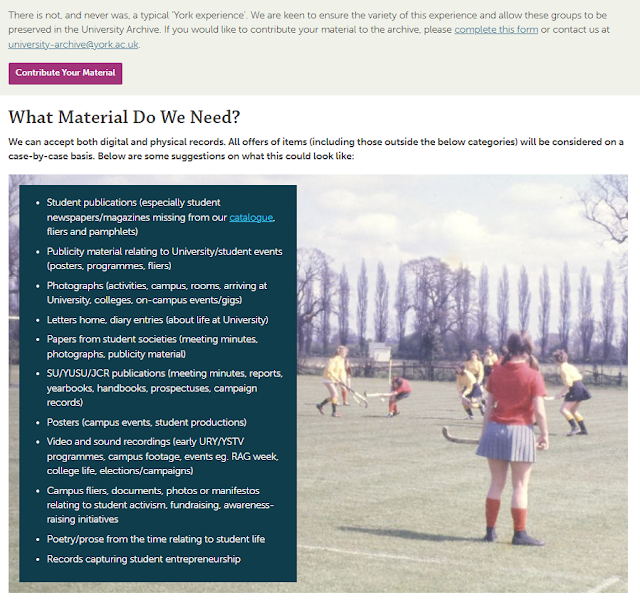Introduction
The project brief asked me to design a social media campaign that would engage the many audiences of the Borthwick Twitter account. There needed to be a coherent element and tweets needed to go out weekly. The tweets had to be interesting and allow for a two-way conversation between the archive and audience, and be based around the University Archive. They could showcase any University 'firsts' and link to wider events, such as LGBT History Month or Black History Month where possible. I realised quickly that the key to success would be focusing my efforts on one range of documents in particular - York's long-standing student newspaper, Nouse. The Twitter campaign had a dual-aspect as it would coincide with, and help celebrate , the University’s 60th anniversary. The anniversary provides an opportunity to look forward as well as back, and to reflect on the University’s past work in combating inequality and championing social justice, diversity and inclusion. I knew this was important to incorporate into the campaign and kept it in mind when I was reading the newspaper for information.
 |
| Nouse masthead (1984) |
Construction of the project
Constructing the tweets got easier as time went on. I found a voice that I liked and rolled with it. The hardest part was trying to create something that people would want to engage with. I felt that the content of the tweets were interesting and people would like the campaign, but would it inspire them to respond or engage? Measuring the impact of the tweets was also hard and in the back of my mind I was thinking about the essay I had to write for my Masters which reflected on how I communicated the history through the tweets and the engagement as a result of that. I will go more in depth into how I tried to create engagement later in this blog.
 |
| Launch tweet for the YorStory campaign |
The decisions I had to make while designing the project were also crucial. I had to think about what Nouse content I included and then how I would frame this in the tweets. I found myself feeling very conscious about my role as the curator of the project. I had the power to make the decisions as to the tweets’ content and therefore present a curated and highly selective history. I did not try to follow a specific agenda to shape the perception of the University’s history, but this will have happened unconsciously. The forward looking perspective in the University’s vision for the 60th anniversary led me to be more engaged with material on gay rights and environmental issues, and to move away from histories that required more nuance in their telling, such as Enoch Powell being invited by a group to speak on campus in 1968 (the invitation was quickly withdrawn). Students’ Unions and societies have often brought students into contact with challenging speakers, but this history requires more detailed explanation than a single tweet would allow. Therefore, it was left out, not through disengagement with that particular content, but a difficulty in communicating the nuances of this event to the readers of the campaign. I think that is where most of the tension came from in formulating this project. The inherently uneven weight I gave to certain aspects of the newspaper and the subsequent perception of these for the readers. The importance and responsibilities of the role of the curator is something I think that struck me most during this placement. I also learnt quite how difficult and strategic it is to design and run a social media campaign.
Engagement and marketing
 |
| Detail from the Student Life Collection webpage |
During the placement, I also engaged with the social media manager at the Library who gave me some valuable insights into his strategies to increase engagement. I was struck by how data driven he said social media marketing was. I was told that community and trust were the most important ingredients to an engaged audience. In the final part of this blog I will use my experience of the placement and the things I have learnt from the various people I engaged with to suggest some points for future social media campaigns.
Reflections
Thanks a lot!
Izzy
No comments:
Post a Comment
Note: only a member of this blog may post a comment.